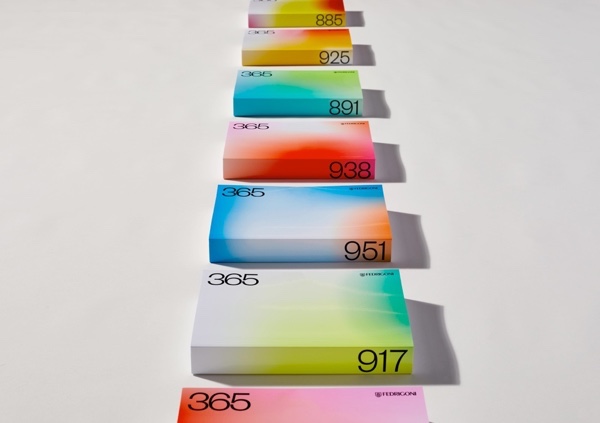Inkjet & Digital Printing
Fedrigoni 365 – Software solutions driving calendar creativity

Wednesday 16. December 2020 - In my last blog I talked about the challenges raised by the complex production of the Fedrigoni 365 2021 calendar created in collaboration with design agency TM. The initial brief set a target of up to 1,000 designs to be transformed into 4,000 unique calendars in ten different colour ways.
By Erwin Busselot, Business Innovation & Solutions Director, Commercial and Industrial Printing Group, Ricoh Europe
The entries had to be submitted as mono vector or grayscale TIFFs and a way to efficiently colourise the artwork using the ten different colour choices had to be found.
An artwork creation process was agreed with TM that would allow different colour combinations in the print production process. Naming conventions were set for spot colours used for the mono vectors and grayscale TIFFs. Ricoh also created an Adobe Illustrator script to accelerate the process of applying the spot naming to the grayscale TIFFs.
We then employed three key pieces of software to manage the production:
1) /data.mill
Ricohs preferred data cleansing and enrichment solution /data.mill was used to create a dataset of contributing designers that appear in each calendar. It devised algorithms to ensure that no design was used twice within any single calendar, and that each design appeared an equal number of times throughout the entire edition of 4,000.
2) FusionPro
The dataset was used by industry leading variable data publishing (VDP) solution, FusionPro, to automatically typeset and lay out the calendar pages during the composition of each print file. This was achieved by creating an intelligent template within the FusionPro application with rules to ensure it matched the requirements of the design brief. FusionPro was also used to dynamically create the covers. Again, each one needed to be unique, but rather than a designer having to create 4,000 different cover designs, FusionPro did this dynamically, using rules within the template to automatically create variable cover designs from a set of only ten masters.
A third FusionPro intelligent template was created for the book jacket. Each jacket includes all the names of the nearly 1,000 creatives who participated in the project, with those whose designs appear in any particular calendar highlighted. Again, a set of rules had to be created to achieve this, further showing that the power and flexibility of FusionPro was essential to the success of a complex project such as this.
3) BatchBuilder
Fedrigoni 365 2021s the unique variable artwork PDF files were built into batches for production using RICOH TotalFlow BatchBuilder software in conjunction with Enfocus PitStop Server and Ultimate Technologies Impostrip. Each PDF file was allocated a unique name for the cover and for the text by a FusionPro script that would allow BatchBuilder to automate the workflow process. BatchBuilder extracted the job data from the file name and then passed the file to the integrated PitStop server which runs an action that converts all the mono spot colours to the correct T7 colour specified in the filename. BatchBuilder then passed the PDF file to Impostrip to add all the relevant barcodes and finishing marks, as well as imposing the file into sequentially numbered blocks of eight books for section sewing. Eight was chosen as it was optimal number for efficient processing on the guillotine to load into the feeder of the MeccanoTecnica Universe binder.
The software didnt just help us create the calendars.
The graphics supplied by the designers were printed using the capabilities of the five colour Ricoh Pro C7200x digital colour press, in only one extended gamut Touch7 colour in each of the Fed 365 2021 books. So, we decided to create a personalised booklet for every designer with their designs printed in all the ten Touch7 colours used. The booklet also details more about the main areas: Creative, Variable Data Workflow, Production Workflow, Printing & Finishing.
We also decided to create booklets for all the partners involved in the project. Plus, as well as personalising the cover we asked each member of staff for the day of the month on which they were born. As part of the Variable Data composition process we then selected ten graphics with the corresponding number from the graphics library used in the main 365 calendar. These graphic selections were then automatically coloured in the ten colours used for the project.
This challenging project allowed us to explore the versatility of our hardware and software solutions and work together with partners who are leaders in their field of expertise.
